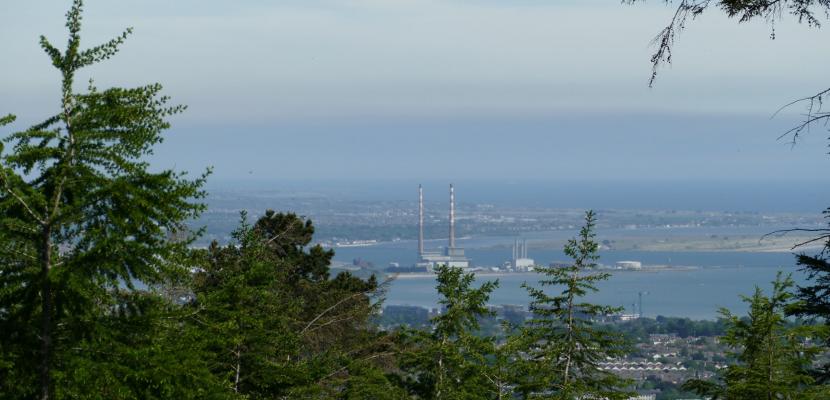
Dublin Mountains Makeover (DMM)

About this good practice
The European Green Deal states that the EU’s forested area needs to improve, both in quality and quantity, for the EU to reach climate neutrality and to secure a healthy environment. Furthermore, the Eurobarometer Survey (2019) revealed that the clear-felling of forests is something the youth of Europe no longer want to see. The strategic aim of the DMM is to improve biodiversity, climate resilience and recreation by regenerating high footfall urban forests. Sections with suitable soils are being planted with native trees, and forests will no longer be clear-felled. Instead, Continuous Cover Forestry (CCF) techniques underlie the ongoing transition to multi-generational forests, conducted in a manner that minimises disruption to local residents and visitors, while locking in benefits for nature and recreation. The effectiveness of the DMM is underscored by the involvement of wide-ranging stakeholders in its development as the vision for the Coillte estates in the Dublin mountains. These include 1) the Dublin Mountain Initiative (DMI) representing recreational users of the Dublin Mountains including Mountaineering Ireland, Cycling Ireland, the Irish Mountain Running Association and the Irish Orienteering Association, 2) Scouting Ireland, 3) Local Municipalities, and 4) the National Parks and Wildlife Service. These stakeholders came together with Coillte to form the “Dublin Mountains Partnership” which worked to develop a 'shared vision' for forests in the Dublin Mountains.
Expert opinion
The preservation of urban and peri-urban forests will play a major role for the attainment of many EU environmental policy objectives in the next decade and beyond thanks to the ecosystem services they provide which include, for instance, water and air purification, climate regulation and biodiversity. Both the new 2030 EU Biodiversity Strategy and the new EU Strategy on Climate Adaptation have made clear that implementing actions to protect and better manage forests at the local and regional level is key for solving the current ecological and climate crisis and building a more resilient society. The new EU Forest Strategy and the proposal on EU legally binding nature restoration targets, both expected to be published by the European Commission in the course of 2021, will further define the policy and legal framework for local and regional initiatives on forests. The good practice at hand may certainly inspire policymakers who are interested in adopting techniques to improve forest continuity and expand forest coverage while also making sure that forests remain accessible for recreational uses. The involvement of multiple stakeholders as well as the fact that this good practice builds on the commitment not to cut trees anymore in the area where the initiative is being implemented are core aspects that deserve to be underlined.
Resources needed
The DMM is a project of Coillte Nature, the not-for-profit branch of Coillte, a state owned commercial forestry business (Turnover in 2019: €327.4 million). The team includes a Director, a Specialist in Environmental Communications & Partnerships, an Ecologist and a Forestry Operations Expert.
Evidence of success
In 2020, 14 hectares (ha) of “Continuous Cover Forestry” (CCF) and 6 ha of Remove & Replant with a mix of native and non-natives (R&R-mix) were planted in Ballyedmonduff forest; CCF was undertaken in Cruagh forest (18 ha), and; on-site preparations were made for the first new native woodland in the Dublin Mountains at Ticknock using Remove & Replant (R&R) over 3 ha near the public car park. Project implementation is comprehensively documented on the project website on an ongoing basis.
Potential for learning or transfer
Good examples of sustainable forest management approaches are vital to achieve key targets contained in the European Green Deal. The DMM is a practical example which can inform better forestry management for biodiversity enhancement and recreation in high footfall forests. While Coillte (the practice owner) is state-owned, an increasing proportion of forestry activity in Ireland is being conducted on a private basis. With climate change and biodiversity now firmly at the top of EU and national agendas, public and private sector foresters require new knowledge in order to improve the planning and management of their forests to respond to these challenges and horizontally integrate ecosystem service considerations into their plans and strategies. Sharing of the DMM as a Good Practice can also potentially inform the New Forest Strategy for the EU, particularly for forest restoration in high footfall locations.
Further information
Website
Good practice owner
You can contact the good practice owner below for more detailed information.
Coillte
